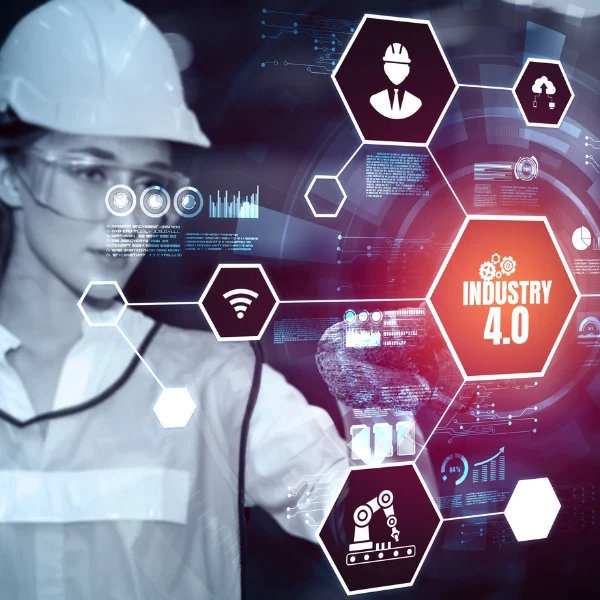
Digital twins are a virtual representation of a process, asset or system that enables engineers and operators to run simulations and test hypothesis.
The benefits of digital twins for oil and gas operators are numerous. They can lower operating costs, improve maintenance routines, accelerate production and reduce safety risks by enabling organizations to test scenarios and examine the likely impacts of operational changes before implementation in the real world.
Digital twins can also accelerate decarbonization and support sustainability initiatives. A report by Accenture, for instance, claims that digital twins "can deliver up to $1.3 trillion of economic value and 7.5 Gt CO2e emissions reductions between now and 2030."
While the potential business benefits are huge, many organizations struggle to derive full benefit from their digital twins.
At Oil and Gas IQ’s recent Accelerating Sustainability with Digital Twins online event, leaders from Chevron, Neptune Energy and Renault discussed the keys to ensuring a successful digital twin rollout by aligning people, process and technology.
Here are 3 keys that our panelists identified:
#1: Clear Business Priorities and Goals
As with most initiatives or changes, you need to first understand how what you’re doing ties into the overall business goals and priorities. Technology can only help if you know what you’re actually trying to achieve.
Once you have established your business priorities and goals, you can derive how digital twin technology will support that strategy.
“Digital twins enable you to predict the future. You have to ask yourself how can the ability to predict the future - an ability to run scenarios, an ability to test and understand the outcomes of new regulations or new sustainability targets - help your business? How can that help you achieve your key priorities?” explains Ben Randell, Product Line Manager, Chevron.
FURTHER READING: How BP and Chevron Use Digital Twins to Optimize Assets
#2: An Innovation Mindset and Culture
It can be tempting to focus on the technical challenges of digital twin implementation such as getting access to the right, high quality data. However, our panelists all agreed that the most challenging part of digital twin implementation had nothing to do with the technology, and everything to do with the people.
“Cultural mindset is the biggest challenge,” said Chevron’s Ben Randell.
If people don’t trust the digital twin they will not act upon its recommendations. If people don’t understand what kinds of questions they can ask of the digital twin, they will struggle to derive insight from it.
Randell adds that successful operations can sometimes be the enemy of innovation. There is an organizational inertia that sets in when a company feels that it is successful and therefore does not need to change.
“Industry 4.0 is characterized by massive companies going completely broke. That’s what happens when you have reluctance to change or just focus on the short-term quarter-to-quarter results to keep our core business running and not look to innovate,” he observes. “We’re moving into a world where if it ain’t broke…break it.”
Alan Bibb, Lead Digital Assets, Information and Technology, at Neptune Energy says that this starts with the behaviors and beliefs of workers.
“The foundations are absolutely essential,” he explains. “That’s generating a culture of being data-driven. Generate that curiosity and desire to work in a digital way.”
Seham El Behissy, former Digital and Connected Cars General Manager - Middle East at Renault says that organizations need to establish an innovation mindset. This requires problem solving and creativity – two skills that humans are uniquely placed to bring to the table.
“Before we transform a process or a service, we need to make sure that we are solving a real problem,” says Seham El Behissy, Digital and Connected Cars General Manager - Middle East, Renault. “We need to focus 90% on understanding the problem and 10% on the solution.”
FURTHER READING: Building the As-Is Digital Twin on Brownfield Projects & Operational Assets
#3: A Practical, Step-by-Step Approach to Implementation
As the saying goes, you must learn to walk before you can run. While a big bang, top-down approach to digital twin implementation can perhaps work at some companies, oil and gas operators should be wary of biting off more than they can chew.
“I think you need to break down the problem and address it in a way that is meaningful and quick to market, says Neptune Energy’s Alan Bibb.
Neptune, he explains, is taking a tactical, ground up approach to adding context and data to their digital twin in the context of specific projects.
He adds that digital twins will only become more useful in the future as oil and gas companies seek to increase efficiency and reduce emissions as more variables needs to be factored in.
“In the past we were operating assets in largely two dimensions – maximizing production and reducing costs,” he said. “You could argue that in the old school way the operators are in tune with the plant. It was harder to argue for a digital twin in that context, particularly on brownfield.”
Now that driving sustainability has moved up the agenda at many companies, digital twins will enable companies to better model and predict changes to the complex systems that they operate.
“When we’re talking about one of the biggest challenges [climate change] that humanity has ever faced – which is what we’re talking about here – that ability to predict the future goes from a ‘nice to have’ to a necessity,” says Chevron’s Ben Randell.
WATCH ON DEMAND: Live Recording: WEBINAR: Your Digital Twin in Only 60 Days


















